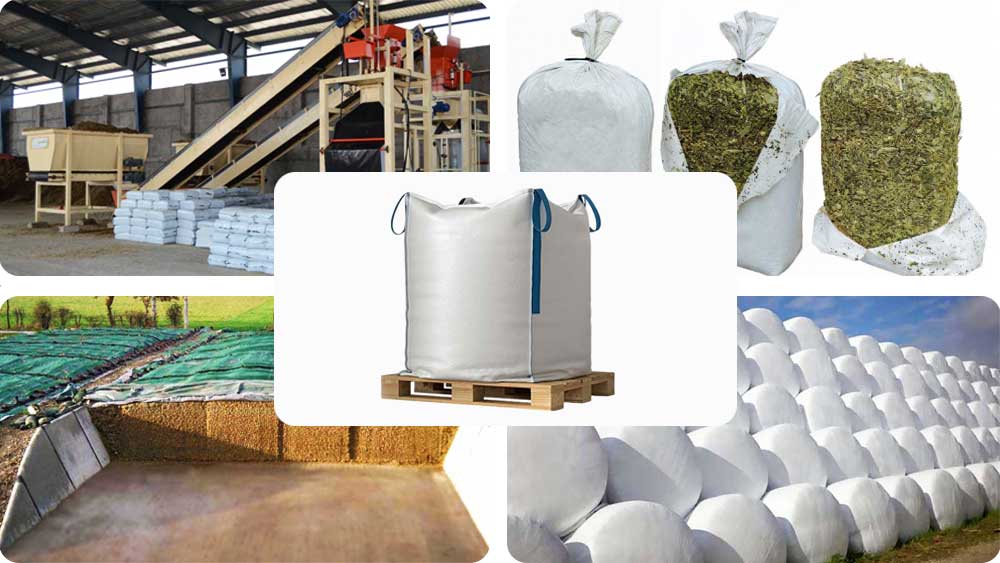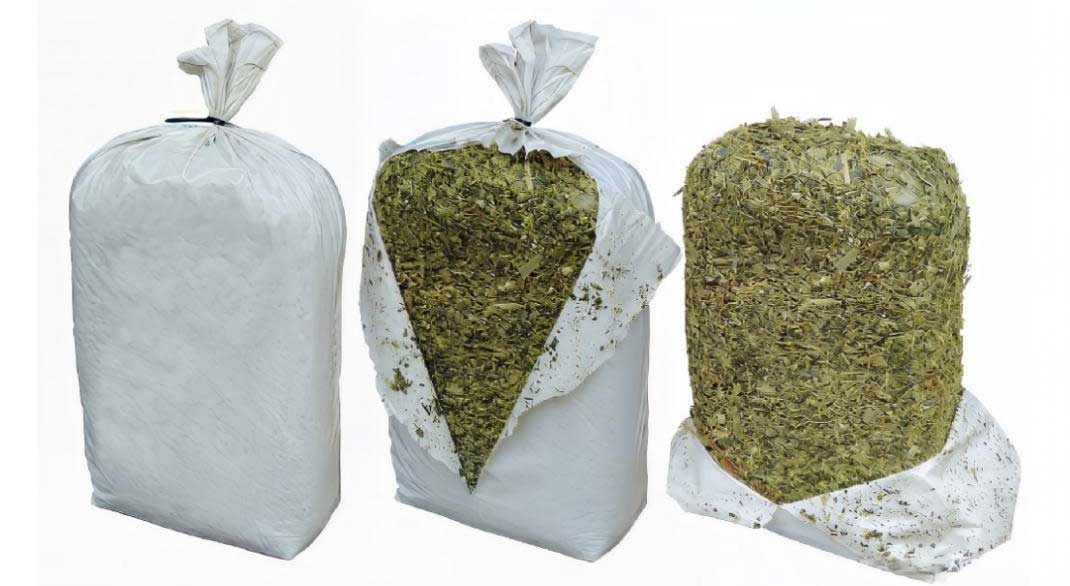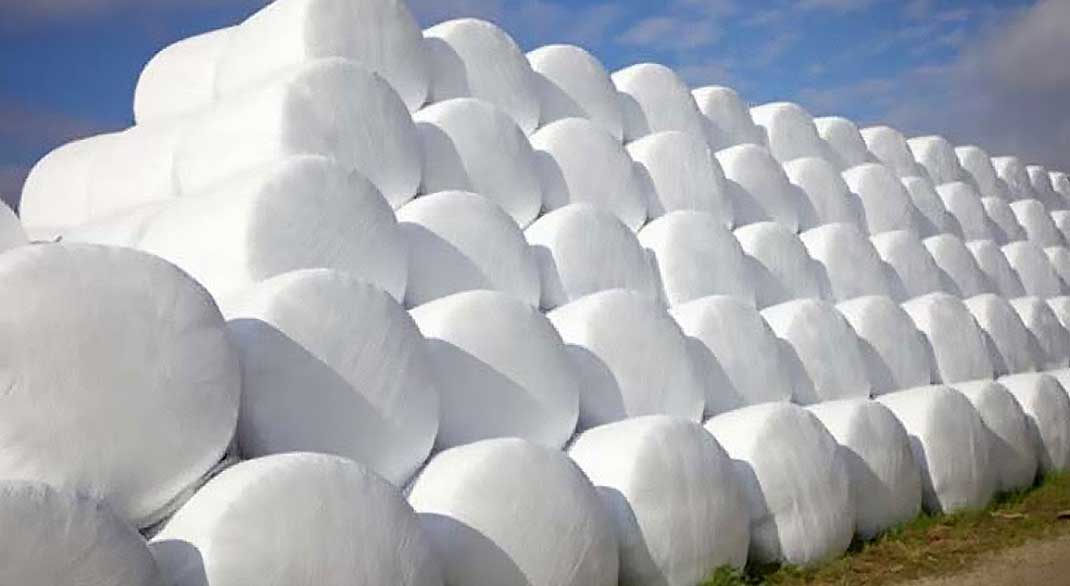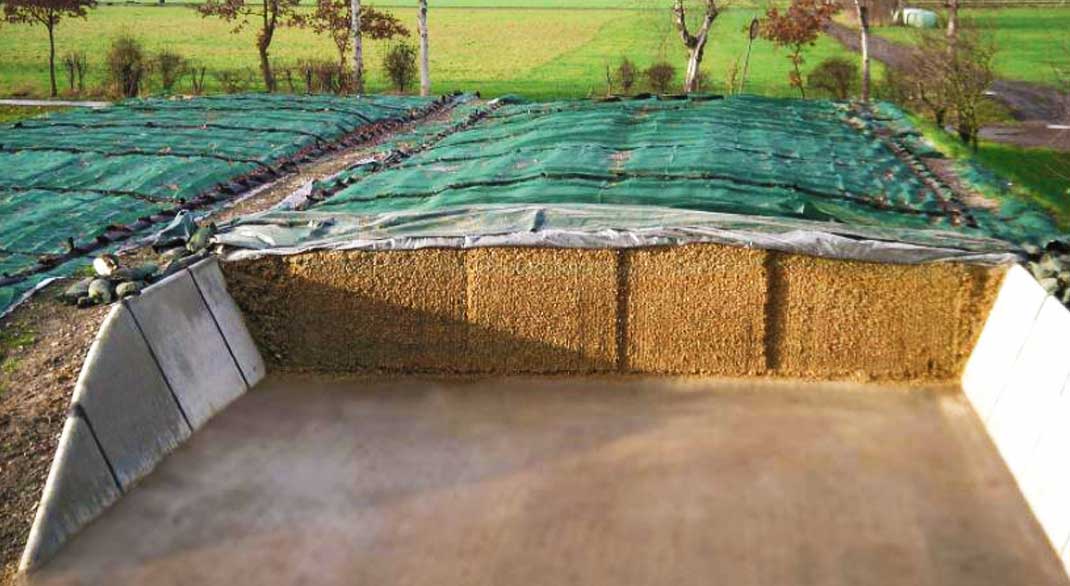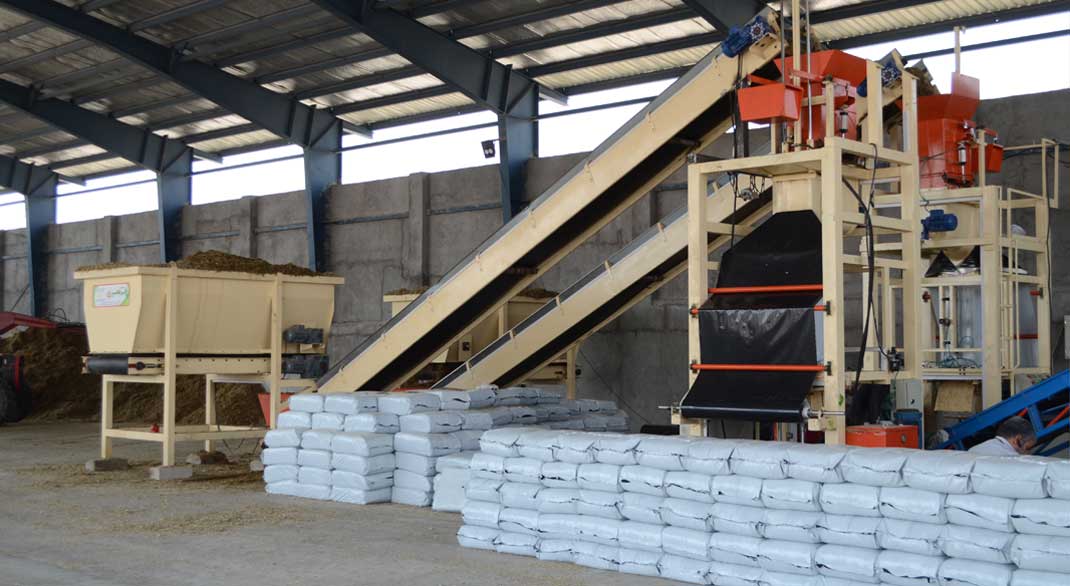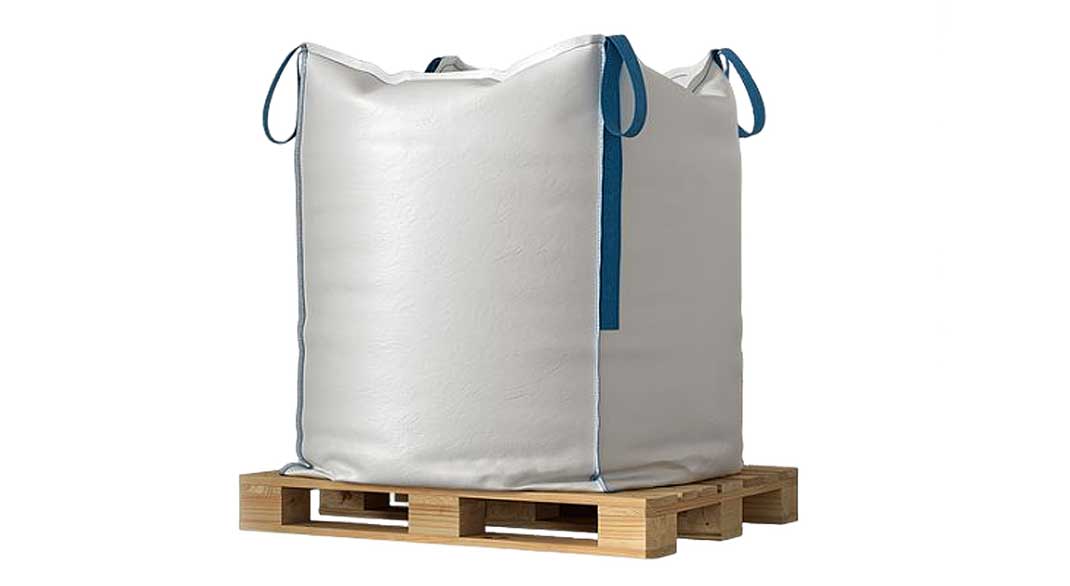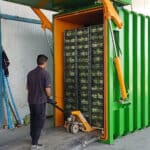Types of Silage Corn Packaging Methods
Silage corn is one of the most important feed sources for livestock due to its high nutritional value, easy digestibility, and cost-effective production, making it widely used in the livestock industry. Proper packaging plays a key role in maintaining quality, preventing spoilage, and increasing shelf life. This article comprehensively examines the different silage corn packaging methods, their advantages, disadvantages, and applications.
1. Packaging in Plastic Bags Without Pressing or Vacuum (Bagging)
Method Description::
This is one of the most common and simplest methods, where harvested and chopped corn is packed into thick, moisture-resistant plastic bags without compression. These bags are typically available in weights of 30, 40, 50, or even 100 kg.
Advantages::
- Easy transportation and storage (can be stacked in small spaces)
- Suitable for small to medium-sized farms
Disadvantages::
- Susceptible to air and moisture infiltration (increased microbial spoilage)
- Higher risk of mold and fungal growth due to oxygen exposure
- Requires more manual labor for filling and sealing
- Risk of tearing if handled improperly
- Limited capacity compared to large silos
Applications:
- Traditional and local livestock farms
Wrapped Bales (Silage Bales)
Method Description::
In this method, silage corn is compacted using specialized machinery and then wrapped in multiple layers of durable plastic (usually polyethylene). Known as "Big Bale"
or "Wrapped Silage," these bales come in sizes of 1 to 1.5 meters and weigh 500 to 1000 kg. One Asian manufacturer of this equipment is Golmohr Sanat Valiasr Company, with 20 years of experience in producing agricultural and industrial machinery.
Advantages::
- Preserves nutritional value for up to 12 months (due to controlled fermentation)
- Prevents nutrient loss (protein, energy, and fiber)
- Can be stored outdoors (no need for trench silos)
- Suitable for medium to large farms
Disadvantages::
- Higher initial cost for packaging equipment
Applications:
- Industrial livestock farms
- Regions with various climates
- Farms lacking space for traditional silos
To view this machine and its specifications, please contact the relevant department.
3. Trench Silos
Method Description::
This is the oldest method, where silage corn is stored in large pits (often concrete-lined) and compacted using heavy tractors or loaders. The surface is then covered with plastic and weighted down with tires or bricks.
Advantages::
- Low cost (suitable for large-scale farmers)
- High storage capacity (up to thousands of tons)
- No need for advanced machinery
Disadvantages::
- High spoilage risk (water seepage, mold, and bacterial growth)
- Greater nutrient loss compared to modern methods
- Requires significant space
- Difficult to transport and distribute
Applications:
- Rural farms with limited resources
- Areas without access to modern packaging technology
- Large livestock farms
4. Fully Automated Mechanized Packaging
Method Description::
Advanced companies like Golmohr Sanat Valiasr produce fully automated silage corn packaging machines capable of packing 25 to 35 kg units with high precision. These machines feature PLC and hydraulic systems.
Advantages::
- High production speed
- Accurate weighing and sealing (reduces human error)
- Lower labor costs
- Flexible packaging sizes
Disadvantages::
- High initial investment
Applications:
- Animal feed production factories
- Small to semi-industrial farms
To view this machine and its specifications, please contact the relevant department.
5. Jumbo Big Bag Packaging
Method Description::
Here, silage corn is packed into very large polypropylene bags (typically 500 to 1000 kg). This method combines silage storage with industrial packaging.
Advantages::
- Easy transport with forklifts
- High tear resistance
- Suitable for export
Disadvantages::
- Requires specialized filling equipment
- Higher cost compared to small bags
Applications:
- Very large livestock farms
- Exporting silage corn
6. Compacted Bales (Cube or Cylinder)
Method Description::
In this method, silage corn is compressed by balers into square or round bales. This is common in advanced countries like the U.S. and Europe and is suitable for corn with moisture content below 50%.
Advantages::
- Compact size, easy transport
- Prevents feed waste
- Long shelf life (if plastic-wrapped)
Disadvantages::
- Requires expensive machinery
- Limited to standard sizes
Applications:
- Large-scale farms
- Countries with advanced agricultural mechanization
Conclusion: Choosing the Best Packaging Method
The optimal silage corn packaging method depends on:
- Farm size (small, medium, industrial)
- Budget (equipment, plastic, labor costs)
- Climate (humidity, temperature)
- Storage facilities (warehouse, outdoor space)
Final Recommendations:
- Small farms: Plastic bags or trench silos
- Industrial farms: Wrapped bales or automated machines
- Export: Big bags or compacted bales
Choosing the right method helps prevent spoilage, preserve nutritional value, and reduce production costs.
(Types of silage corn packaging methods)
